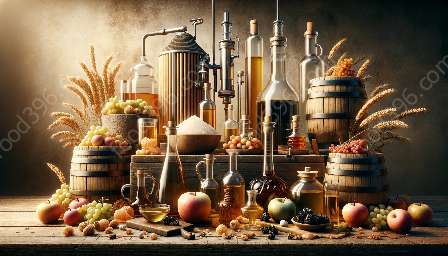Vinegar has long been a staple in culinary applications, recipes, production, and food preservation. Its versatility and unique flavor profile make it a valuable ingredient in the kitchen. From salad dressings to pickling, vinegar plays a crucial role in enhancing and preserving a wide variety of foods.
The Role of Vinegar in Culinary Applications
Vinegar is a multi-functional ingredient that adds a distinct tanginess and depth of flavor to dishes. Its acidic nature not only balances the flavors in a recipe but also has the ability to tenderize and enhance the texture of certain foods. In marinades, vinegar acts as a tenderizer, breaking down proteins and making meats more succulent and flavorful.
One of the most popular culinary uses of vinegar is in salad dressings. Its acidity cuts through the richness of oils and adds a bright, tangy note to salads. Additionally, vinegar can be used to deglaze pans, adding complexity to sauces and gravies.
Recipes Featuring Vinegar
Vinegar is an essential ingredient in countless recipes across various cuisines. From tangy vinaigrettes to pickled vegetables, vinegar adds depth and complexity to dishes. Here are a few classic recipes that showcase the versatility of vinegar:
- Balsamic Glazed Chicken: A delicious and easy-to-make dish that features a sweet and tangy balsamic vinegar glaze.
- Classic Pickles: Whether you're pickling cucumbers, beets, or other vegetables, vinegar is the key ingredient for preserving and flavoring pickles.
- Barbecue Sauce: Vinegar-based barbecue sauces are a staple in Southern cuisine, adding a zesty kick to grilled meats.
- Coleslaw: Tangy and creamy, coleslaw dressing often includes a splash of vinegar to balance the sweetness and creaminess of the dish.
The Production of Vinegar
Vinegar is typically produced through a fermentation process that converts ethanol or sugar into acetic acid. The most common method of vinegar production involves the fermentation of alcoholic beverages, such as wine or cider, using acetic acid bacteria. The bacteria oxidize the alcohol to acetic acid, resulting in the production of vinegar.
There are various types of vinegar, including balsamic vinegar, apple cider vinegar, red wine vinegar, white vinegar, and more. Each type offers a unique flavor profile and is often used in specific culinary applications based on its taste and acidity level.
Food Preservation and Processing with Vinegar
Vinegar has a long history of being used as a preservative for various foods. Its acidic nature creates an inhospitable environment for many microorganisms, making it effective in preserving fruits, vegetables, and other perishable items. Pickling, a process that involves submerging foods in vinegar brine, is one of the oldest and most common methods of using vinegar for food preservation.
Additionally, vinegar is frequently used in canning and preserving foods such as chutneys, relishes, and salsa. Its acidity not only imparts a unique flavor to the preserved foods but also inhibits the growth of bacteria and molds, extending the shelf life of the products.
Conclusion
Vinegar is a versatile and indispensable ingredient in culinary applications, recipes, production, and food preservation. Whether used to add tanginess to dressings, create flavorful pickles, or preserve foods, vinegar plays a vital role in the kitchen. Understanding the various types of vinegar, its production process, and its role in food preservation opens up a world of culinary possibilities, allowing home cooks and professional chefs alike to elevate their dishes and create stunning flavors and textures.

